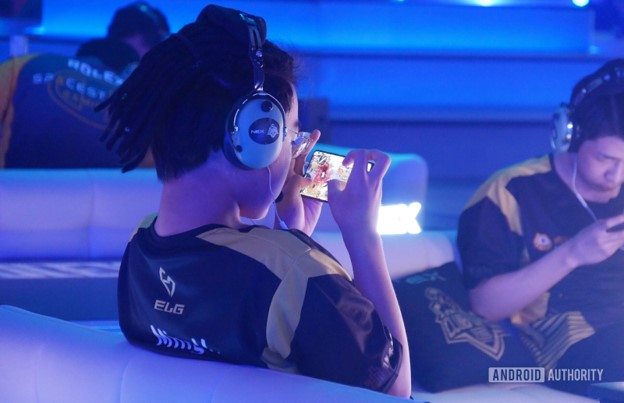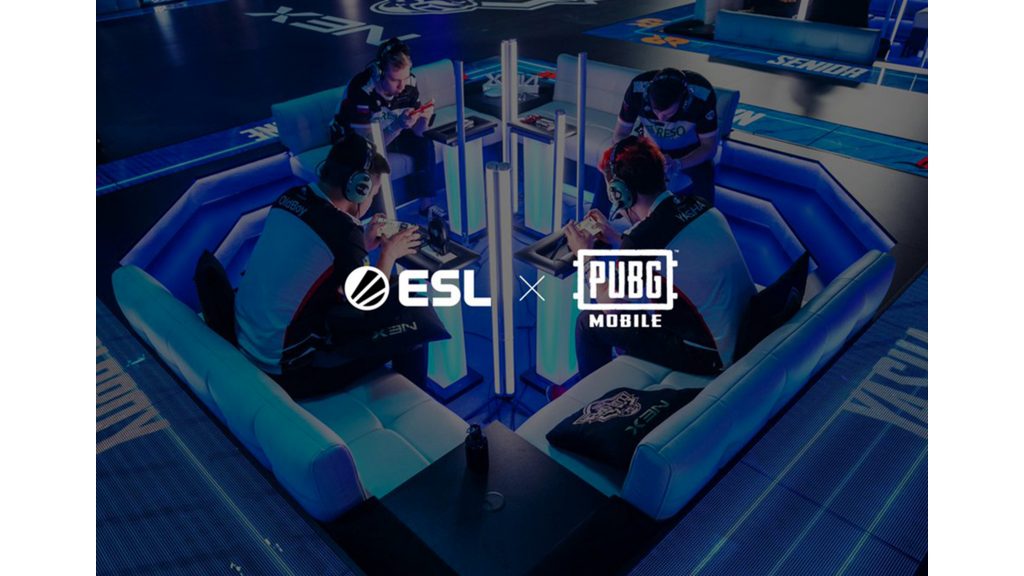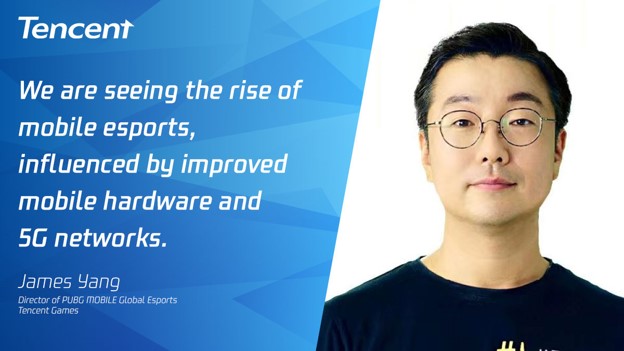In Conversation With:
James Yang, Director of PUBG MOBILE Global Esports, Tencent Games
With easy access to smartphones, mobile gaming is on the rise, and this nifty device does not limit players to just casual video games. In recent years a number of mobile games have even hosted their own esports tournaments to filter the best out of hundreds of thousands of users. These events are booming in popularity, at times overshadowing their desktop esports counterparts and rivaling traditional sports events in terms of prize pools and viewership.
In fact, with a minimum of 75% growth in mobile gamers seen across Indonesia during April and May 2020 alone, Southeast Asia has emerged as one of the most viable gaming markets around the globe. Besides Indonesia, which is home to 250 million people and has become a mobile gam\ing nation in SEA, Thailand is another high-profile game market, with the country alone boasting 32 million gamers.
Mobile: Esports Game-Changer
With easy access to smartphones, mobile gaming is on the rise, and this nifty device does not limit players to just casual video games. In recent years a number of mobile games have even hosted their own esports tournaments to filter the best out of a pool of hundreds of thousands users. These events are booming in popularity, at times overshadowing their desktop esports counterparts and rivaling traditional sports events in terms of prize pools and viewership.
With the dominance of premium publishers, mobile is poised to account for 69.4% of all gaming revenue in the region.
According to a recent whitepaper, the esports industry is forecast to grow at a significant +20.8% from 2019 to 2024 and should reach US$72.5 million in 2024, nearly double the global CAGR of +11.1% for the sector. This means a larger focus on the industry and open competition structures, including a slew of regional and global mobile esports tournaments filling Singapore’s calendar this year.
We speak with James Yang (JY), Director of PUBG MOBILE Global Esports, Tencent Games, to understand more about the importance of open competition structure for mobile esports and what lies ahead for the organisation as it carves out expansion plans in the post-pandemic world.
JY: Esports has been growing over the past few years and in the last decade we have seen it go from a hobby to an incredible movement that has been embraced by communities around the globe. In Southeast Asia, esports is leading the emergence of innovative business models and new career opportunities in the region. Some of the opportunities include various professional roles within the games and esports ecosystem, such as content creator, analyst, referee, and many other athletes like professional fighting games player Xian (catch Player’s Spotlight: Xian on TechStorm on 24 Nov), Iceiceice and Team Flash.
By 2024, Newzoo predicts that the Compound Annual Growth Rate (CAGR) for eSports enthusiasts from 2019-2024 will be approximately 7.7%. They expect that the number of occasional viewers will grow to 291.6 million. And that there will be 285.7 million eSports enthusiasts, making the total audience 577.2 million.
TechStorm: We understand you spearheaded the development of the PUBG Mobile Esports programme and created the most robust global competitive ecosystem for mobile esports. Why do you think it is important to have an open competition structure?
JY: “Zero to Hero’ is one of the main concepts we have for esports. Open competition structure is very important to grow the talent pool organically among all existing players. Every single player can have the opportunity to be promoted from small amateur events to the mega global championships. We want to offer all players a clear path to become a pro, from zero to PUBG Mobile hero. We want to make our players’ dream come true.
TechStorm: What are you doing differently to get to the next stage of growth?
JY: Ever since the inception of competitive PUBG Mobile in 2018, the game’s esports scene has grown exponentially. In 2019, open tournament such as the PUBG Mobile Club Open (PMCO) was organized, and in 2020, we held the PUBG Mobile Pro League (PMPL) pro league. This year, we expanded the pro leagues to 14 leagues to cover all key regions in the world and enhanced the global championship into USD15 million prize pool. As the next step, we will make the ecosystem to be more open to third parties and local partners, and industrialize the pro leagues to franchises. We have always aimed to become Tier-1 esports game, and we believe we are getting close.
TechStorm: What were some key challenges you faced when expanding into emerging games markets, namely Africa, South Asia and the Middle East?
JY: One of our goals for PUBG Mobile Esports is to become the first global tier-one mobile esports title. An important factor for a game to become a tier-one esports title is global popularity. While a good majority viewership is still within East and Southeast Asia, we are observing a stronger viewership growth across the board. The viewership in the Americas and Europe has been increasing and we are making various efforts to make the esports world more equal as in working towards a level playfield for East and West all the same. We are hosting more grassroots-level competitions and cross-regional tournaments which will allow more pro-organizations to gather experience while playing against the best and reduce the skill gap.
TechStorm: How has the COVID-19 pandemic influenced the expansion of PUBG Mobile Esports beyond Asia Pacific?
JY: Esports has emerged as one of the most popular form of entertainment during times where people are staying at home. The pandemic has accelerated esports viewership not just regionally, but globally as well and pushed all service providers, developers, publishers and event organizers in the esports industry to up their games and invest in technologies to enhance gameplay, competition environment, as well as online tournament experience for fans watching online. PUBG MOBILE Esports offers both players and fans a much-needed outlet for social interaction, competition, and sports during times where people are staying at home and practice social distancing, allowing them to stay in touch and engage with their communities. Organizers are now expected to use new technologies and broadcast tactics to deliver immersive and differentiated experiences for players and fans who watch the tournaments live and at home. The key challenge in shifting offline tournaments to online lies in the limitation arising from the physical distance, of which the company strives to overcome by working continuously to offer the best possible solutions — from server location, network optimization, to devices — to ensure that great connection is provided, wherever the players are.
TechStorm: What goals do you have for the Asian and Western market in the immediate 6 to 12 months?
JY: We certainly do have many exciting plans, yet, the tournament structure will be very much similar to that of previous years such as the PUBG Mobile Club Open (PMCO) and PUBG Mobile Pro League (PMPL) followed by a PUBG Mobile Global Championship (PMGC).
This year, winning teams can also expect a much bigger prize pool of up to USD15 million in total. We will continue pushing for bigger viewership in pro leagues such as the upcoming PUBG Mobile Global Championship Season 1. It will be the biggest PUBG Mobile event to date and we are hopeful that it will be a huge success.
In Asia, we look forward to continuing to fuel this ever-growing ecosystem with iconic partnerships to be part of the games and esports community to create excitement for the fans. On a long term mission, we continue to expand our presence and investment on these markets, creating robust and engaging ecosystems in each country.
TechStorm: The global esports and gaming industry is ever-evolving – new esports companies as well as new games are arising. What is PUBG Mobile’s strategy to gain more ground against similar game titles such as CrossFire, Free Fire and new entrant Valorant?
JY: PUBG Mobile is one of the biggest games in the world. We are fortunate to have a huge global audience. Throughout 2020, PUBG MOBILE competitions racked up more than 200 million hours in viewership. We continue to find and explore new ways to improve the environment for our online events, an example being the set-up of a dedicated server for PUBG Mobile Club Open (PMCO) and PUBG Mobile Pro League (PMPL to provide better network conditions under the current COVID-19 network peak. For offline events, we have had to delay some live events, but for the most part, we are continuing with the season as planned.
We are taking steps to continue creating a true professional ecosystem for our game. We have the most advanced global mobile esports ecosystem in terms of an amateur-semipro-pro hierarchy, and we are heavily supported by our development team, operations, marketing, business development, community, and our regional teams. Our philosophy for PUBG Mobile is – mobility, accessibility, and lifestyle. For any event we hold, we try to apply this mantra to all aspects not only on venue, stage design, or key visuals but also to our fans, community, partners, sponsors organizers and professional organizations.. We will continue to do our best to provide even better watching experiences to our audiences and a great competition environment for the players.
Other relevant statistics:
- According to a report by Tencent Holdings Ltd. and NewZoo, a game and esports research firm, Southeast Asia is expected to lead the world in esports revenue with compound annual growth of 20.8% through 2024, nearly double the global rate.
- Indonesia is emerging as a mobile gaming nation in Southeast Asia, which is home to 250 million people, as more Indonesians game because of Covid-19 pandemic lockdown measures.
- 46% of people in Indonesia turned to mobile gaming for entertainment for the first time because of the pandemic.
- As a microcosm of the South East Asian gaming market, Indonesia has demonstrated that there is the significant growth potential for mobile gaming in the region due to better accessibility and affordability, as well as the need for ‘snack-sized entertainment’
- 24% of respondents spend an hour gaming while the average mobile gamer spends 11-20 minutes ‘snack-sized’ playtime per session
By Editorial Team / October 27, 2021
Catch the premiere of Player’s Spotlight: Xian on TechStorm on 24 Nov, airing at 9:50pm (SG/MY), 8:50pm (BKK/JKT), 7:20pm (SL)



